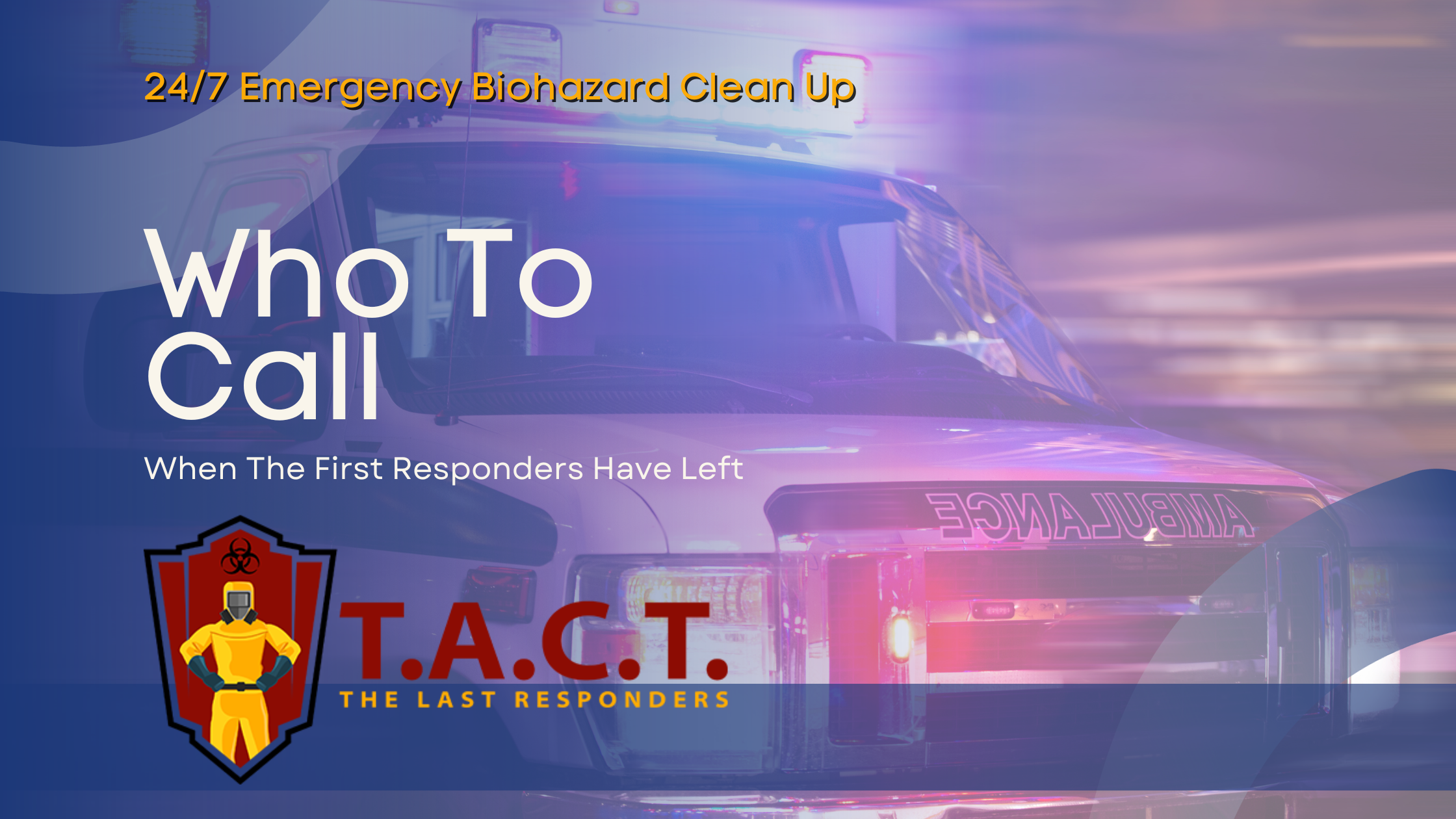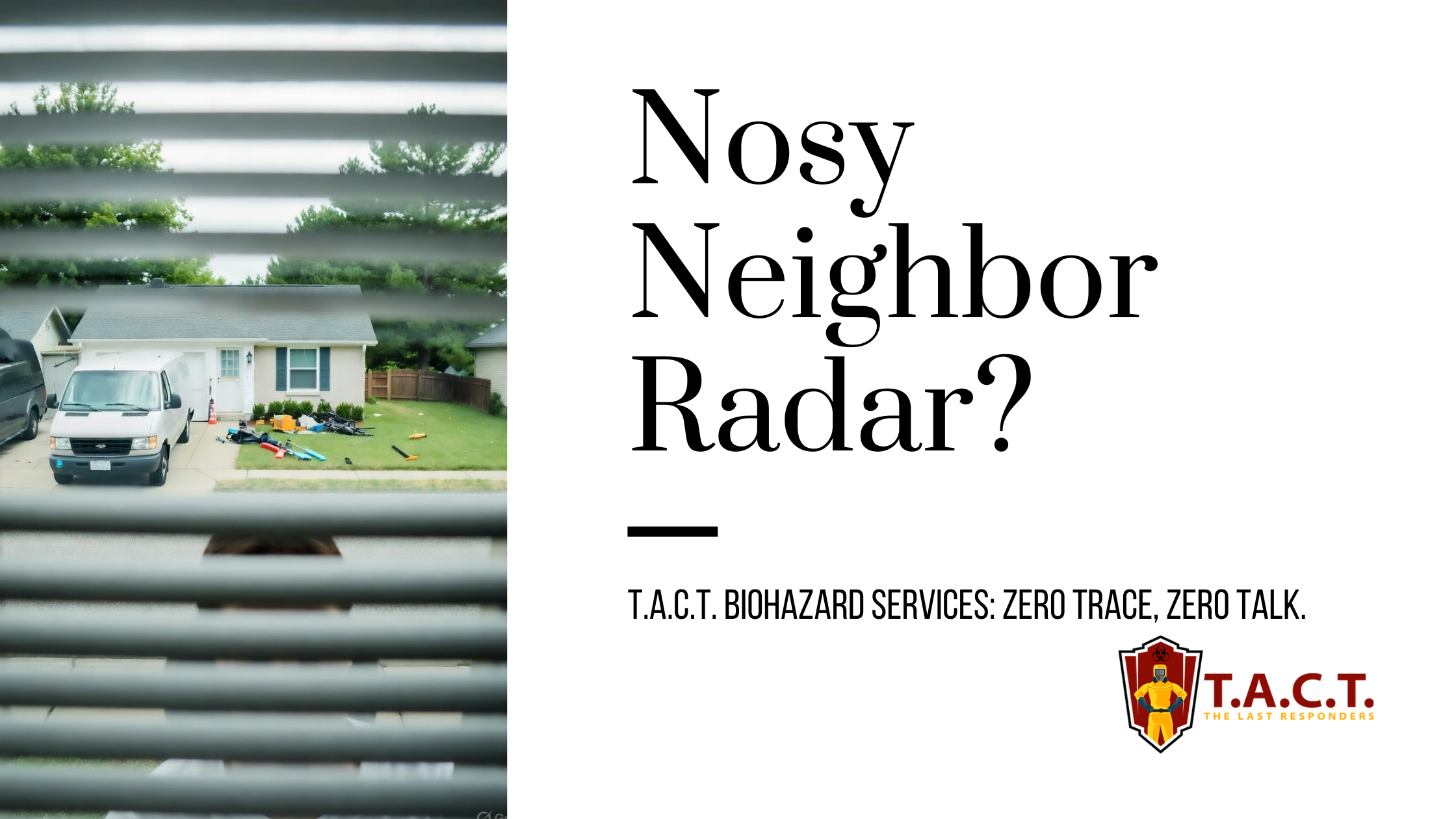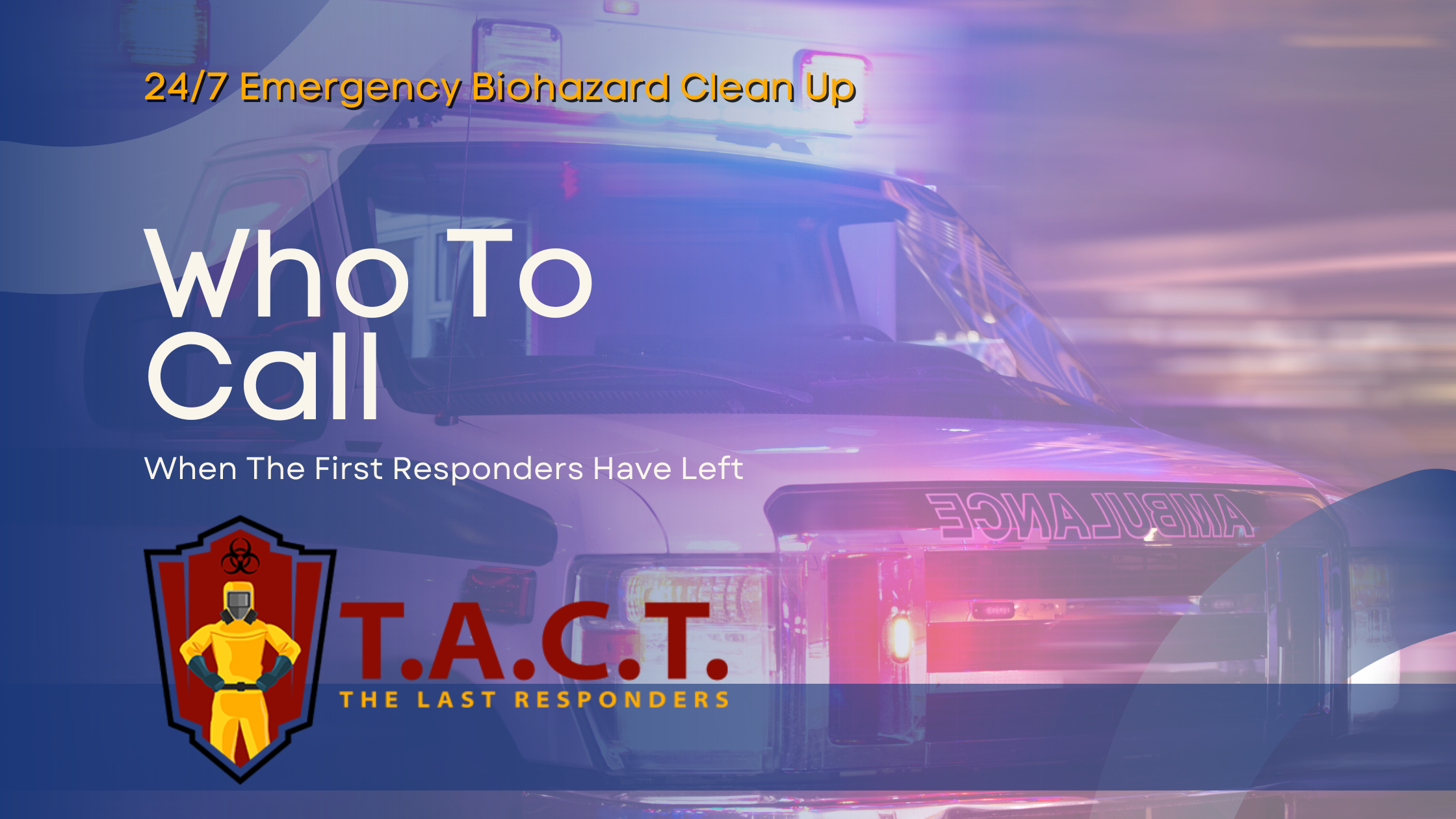Suicide scene cleanup

Suicide Scene Clean Up: Professional Restoration Services for Families in Crisis
When tragedy strikes and families face the devastating loss of a loved one to suicide, the last thing they should worry about is the dangerous and traumatic task of cleaning up the scene. Professional suicide scene clean up services provide essential restoration support during these crisis moments, ensuring both safety and compassionate care when families need it most.
The suicide presents significant health risks, legal challenges, and emotional trauma that untrained individuals simply cannot handle safely. Professional cleaning teams specialize in biohazard removal, bloodborne pathogen containment, and complete property restoration while allowing families to focus on healing and grieving.
Statistics reveal that family members exposed to suicide scenes experience a 75% increase in trauma and suicide risk, making professional intervention not just recommended but critical for survivor wellbeing. This comprehensive guide explores why professional suicide cleanup services are essential and how they protect families during their darkest hours.
Understanding Suicide Scene Cleanup
Suicide scene cleanup refers to the professional removal of blood, bodily fluids, and biohazardous materials following a suicide incident. This specialized service goes far beyond conventional cleaning, requiring extensive training, specialized equipment, and strict adherence to federal safety protocols.
Family members should never attempt DIY cleanup due to the severe health risks and additional emotional trauma involved. Exposure to blood and bodily fluids at crime scenes poses significant health risks from bloodborne pathogens, while the psychological impact of handling a loved one’s remains can compound grief and delay healing.
Federal regulations mandate that suicide cleanup must be performed by trained professionals using personal protective equipment and following OSHA bloodborne pathogen standards. The Occupational Safety and Health Administration requires specific exposure control plans, while the Environmental Protection Agency regulates the proper disposal of biohazardous materials.
Professional suicide cleanup teams undergo rigorous training to handle these difficult tasks with both technical expertise and emotional sensitivity. They understand that each scene represents not just a cleanup job, but a family’s profound loss requiring compassionate restoration services.

Health and Safety Risks of Suicide Scenes
Crime scenes involving suicide present multiple health hazards that can endanger anyone attempting cleanup without proper training and equipment. Bloodborne pathogens including Hepatitis B, Hepatitis C, and HIV can survive for days on surfaces, creating ongoing infection risks for family members and visitors.
These pathogens carry significant health risks and can be transmitted through contact with contaminated blood and bodily fluids. Hepatitis B, in particular, can survive outside the body for up to seven days, while HIV may remain viable for several hours on surfaces. Professional cleaners use EPA-registered disinfectants specifically designed to neutralize these dangerous microorganisms.
Legal penalties for improper disposal of biohazardous waste can result in substantial fines and criminal charges. Household hazardous waste regulations prohibit disposing of contaminated materials in regular trash or landfills, requiring specialized handling through licensed transfer station facilities.
Cross-contamination risks multiply when untrained individuals spread contaminants to other areas of the property. Without proper containment procedures and protective equipment, well-meaning family members can inadvertently expose themselves and others to dangerous pathogens while causing further property damage.
The emotional trauma of handling a loved one’s remains compounds these physical dangers, often overwhelming families who are already dealing with grief and shock. Professional services remove this additional burden while ensuring safety for everyone involved.
Federal and State Regulations for Suicide Cleanup
OSHA requirements establish strict exposure control plans and bloodborne pathogen safety protocols that must be followed during any biohazard cleanup operation. These regulations mandate specific training, vaccination programs, and protective equipment for workers handling potentially infectious materials.
EPA-approved cleaning agents and disinfectants are required for safe biohazard removal, ensuring complete elimination of dangerous pathogens. Standard household cleaners and other chemicals simply cannot achieve the level of decontamination necessary to restore a safe condition to affected areas.
DOT regulations govern the proper packaging and transportation of biohazardous waste from suicide scenes to approved disposal facilities. These materials must be collected, labeled, and transported according to strict guidelines to ensure safety throughout the disposal process.
State licensing requirements and ANSI/IICRC S540 industry standards establish minimum qualifications for biohazard cleanup companies. Professional organizations maintain certification programs that ensure cleanup specialists possess the necessary expertise to handle these challenging situations safely and effectively.
Companies providing suicide cleanup services must carry specialized insurance and bonding to protect both their workers and the families they serve. This regulatory framework ensures that only qualified professionals with proper training and equipment can legally provide these critical services.
The Professional Suicide Cleanup Process
Professional suicide scene cleanup begins with a comprehensive initial scene assessment to identify all contaminated areas, including blood spatter patterns and fluid seepage that may not be immediately visible. This evaluation determines the scope of work required and identifies any structural damage that needs attention.
Cleanup teams develop a comprehensive restoration plan based on the specific suicide method and location details. Different scenarios require different approaches - a gunshot incident creates different contamination patterns than an overdose or hanging, requiring specialized techniques for each situation.
Teams use hospital-grade personal protective equipment (PPE) and industrial cleaning solutions designed specifically for biohazard removal. This equipment includes impermeable suits, respiratory protection, and specialized tools that prevent exposure while ensuring thorough decontamination.
The systematic removal process addresses all contaminated materials including carpeting, drywall, furniture, and personal belongings that cannot be safely cleaned. Porous materials that have absorbed bodily fluids typically require complete removal and disposal as regulated medical waste.

Containment and Safety Procedures
Establishing containment barriers prevents cross-contamination during the cleanup process, protecting unaffected areas of the property. Professional teams use plastic sheeting, negative air machines, and other equipment to create controlled work environments.
Access restriction ensures that only authorized personnel enter the contaminated area throughout the restoration process. This protects family members, neighbors, and other visitors from potential exposure while allowing the cleanup team to work efficiently.
Air filtration systems manage airborne contaminants and odors that can spread throughout the property. HEPA filtration and specialized odor control equipment ensure that the entire environment remains safe during and after the cleanup process.
Documentation of all contaminated areas and cleanup procedures provides essential records for insurance claims and regulatory compliance. Detailed before, during, and after photographs help families navigate insurance processes while meeting legal requirements.
Cleaning and Disinfection Methods
Removal of visible blood, tissue, and bodily fluids requires specialized tools and techniques designed for biohazard situations. Professional teams use industrial-grade equipment that safely handles these materials without creating additional contamination.
Deep cleaning of porous surfaces that may have absorbed biological materials often requires removal and replacement rather than cleaning alone. Subflooring, drywall, and other building materials frequently need complete replacement to ensure total decontamination.
Application of EPA-registered disinfectants neutralizes pathogens and bacteria that standard household cleaners cannot eliminate. These professional-grade products ensure complete elimination of health risks while meeting regulatory requirements.
Odor elimination using enzymatic cleaners and ozone treatment addresses lingering smells that can trigger emotional distress for families. Professional teams understand that eliminating all traces of the incident supports the healing process for survivors.
Restoration and Property Recovery
Structural repairs including drywall replacement, flooring installation, and repainting restore the property to its pre-incident condition. Professional cleanup companies often coordinate with contractors to ensure seamless restoration that meets both safety and aesthetic requirements.
Final inspection procedures ensure complete removal of all biohazardous materials before the property is returned to the family. This thorough assessment often includes testing to verify that no contamination remains in any area of the affected location.
Issuance of a “Safe to Occupy” certificate confirms that the property meets all safety standards and is ready for normal use. This documentation provides families with confidence that their environment is completely safe and supports insurance claim processing.
Coordination with insurance companies streamlines coverage for cleanup and restoration costs, reducing the financial burden on grieving families. Most homeowner’s and renter’s insurance policies include coverage for biohazard cleanup under their standard provisions.

Emotional and Psychological Considerations
The impact of uncleaned scenes on family grief and healing processes cannot be overstated. Exposure to the physical evidence of a loved one’s death significantly complicates the mourning process and can trigger lasting psychological trauma for survivors.
Professional discretion and compassionate service during family crisis periods help preserve dignity while providing necessary restoration services. Experienced cleanup teams understand the emotional weight of their work and approach each situation with sensitivity and respect.
Reduced trauma exposure allows families to focus on emotional recovery rather than dealing with the dangerous and distressing aspects of scene cleanup. By removing this burden, professional services create space for proper grieving and healing to begin.
Creation of safe, neutral spaces free from traumatic visual reminders supports long-term recovery for all family members. A thoroughly cleaned and restored environment eliminates triggers that could interfere with the healing process for years to come.
Many professional suicide cleanup companies provide referrals to grief counseling services and support organizations, recognizing that their role extends beyond physical restoration to supporting overall family recovery.
Choosing Professional Suicide Cleanup Services
Verification of proper licensing, insurance, and ABRA certification ensures that cleanup companies meet industry standards for safety and professionalism. T.A.C.T. North Atlanta provides certification that demonstrates commitment to best practices in biohazard remediation.
24/7 emergency response availability provides immediate scene containment when families contact professional services. Rapid response prevents further contamination and begins the restoration process as quickly as possible after the incident.
Experience with diverse suicide methods including gunshot, overdose, and hanging incidents ensures that cleanup teams can handle any situation safely and effectively. Different methods create different challenges requiring specialized knowledge and techniques.
Transparent pricing accepted by major insurance providers reduces financial stress for families during crisis periods. Reputable companies work directly with insurance adjusters and provide clear, upfront pricing without hidden fees or unexpected charges.
When selecting a suicide cleanup service, families should verify that the company maintains proper hazardous materials disposal relationships and follows all local regulations. This ensures that the cleanup process is completely legal and environmentally responsible.
Cost and Insurance Coverage
Average costs for professional suicide scene cleanup range from $1,500 to $5,000 depending on the extent of contamination and the location of the incident. Factors affecting cost include the size of the affected area, materials requiring removal, and any necessary structural repairs.
Most homeowner’s and renter’s insurance policies provide coverage for suicide cleanup under their biohazard provisions. This coverage typically includes both the cleanup services and any necessary restoration work required to return the property to its original condition.
Direct billing arrangements with insurance companies reduce the immediate financial burden on families during their time of crisis. Many professional cleanup companies handle insurance paperwork and billing directly, allowing families to focus on grieving and healing.
Payment plans and financing options are often available for families without adequate insurance coverage or for costs exceeding policy limits. Reputable companies understand the financial stress families face and work to provide accessible services regardless of immediate payment ability.
The investment in professional suicide cleanup services provides long-term value by protecting property values, ensuring legal compliance, and supporting family healing. Attempting DIY cleanup or using unqualified services often results in higher long-term costs and ongoing health risks.
Professional suicide scene clean up services provide essential support for families facing unimaginable tragedy. These specialized teams combine technical expertise with compassionate care, ensuring that dangerous biohazardous materials are safely removed while supporting the healing process for survivors.
The health risk, legal requirements, and emotional trauma involved in suicide cleanup make professional services not just beneficial but absolutely necessary. Trained specialists have the equipment, knowledge, and experience to restore properties to a safe condition while treating families with dignity and respect during their darkest hours.
If your family is dealing with the trauma of a suicide, contact a licensed professional cleanup service immediately. These experts will handle the dangerous and traumatic aspects of restoration while providing the support and expertise your family needs to begin healing. Don’t face this difficult task alone - professional help is available 24/7 to guide you through what you should do after a death during this challenging time.
Latest news

Bio Cleaning Services
Read More
Nosy neighbors peeking? T.A.C.T. North Atlanta offers discreet biohazard remediation for rodent infestations, mold, hoarding, and more. Unmarked vehicles, quiet experts, full privacy—24/7 service at 470-781-4775.
Read More
